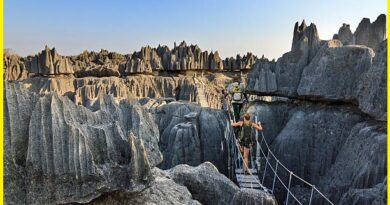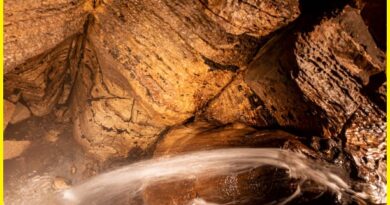Reed Flute Cave- A Beautiful Natural Limestone Cave in China
Reed Flute Cave China
Reed Flute Cave, also known as Ludi Yan, is a natural limestone cave located in Guilin, Guangxi, China. The cave got its name from the reeds growing outside, which can be made into flutes. The cave is around 240 meters long and features a vast array of stalactites, stalagmites, Rock columns, stone curtains, and other unique rock formations. The colorful lights inside the cave illuminate the cave’s natural beauty, and there are several chambers inside the cave, each with its own unique features. Reed Flute Cave has a long history of human occupation, with evidence of people living in the cave dating back 1800 years. In the Tang Dynasty (618-907), it was a popular tourist attraction, and in the 1940s, it was opened to the public as a tourist destination. Reed Flute Cave China is one of the most popular tourist attractions in Guilin and attracts visitors from all over the world. It is a beautiful natural wonder and a testament to the power of nature’s forces over millions of years.

Reed flute cave Geology
The Reed Flute Cave China has formed about 180 million years ago during the Carboniferous period. The cave is about 240 meters long and has a maximum depth of around 18 meters. The walls and ceiling of the cave are covered with various types of rock formations, including stalactites, stalagmites, columns, and flowstones. These formations were created by the deposition of calcium carbonate-rich water droplets, which slowly built up over thousands of years. The different colors of the rock formations in the Reed Flute Cave are due to the presence of various minerals in the limestone, such as iron oxide, copper sulfate, and magnesium oxide. These minerals create different hues of red, yellow, blue, and green, making the cave a visually stunning natural wonder.

How was the reed flute cave formed?-The Reed Flute Cave was formed over millions of years through a natural Karst process. Karst formation occurs when water flows through soluble rock such as limestone, dissolving the rock and creating cavities in the process. Over time, these cavities can grow larger and form underground caves and caverns. Reed Flute Cave, the cave was formed by an underground river that flowed through the limestone rock. As the water flowed through the rock, it dissolved the limestone, creating the beautiful and intricate cave formations that we see today.
Also, read- 8 Most Beautiful Natural Places in China
The colorful stalactites, stalagmites, and other rock formations in the cave were created by the deposition of minerals from the water that flowed through the cave over time. The unique shapes of the formations were influenced by the water’s flow and the specific chemical composition of the water and rock.
Reed flute cave arch China
One of the most striking features of the Reed Flute Cave is the archway that marks the entrance. The archway is about 4 meters high and 5 meters wide, and its unique shape is a result of millions of years of erosion. Once inside the cave, visitors can see a variety of stunning natural rock formations, all illuminated by colorful lights that create a magical atmosphere. The cave is also filled with various formations that resemble animals, plants, and other natural objects, making it a popular tourist destination in the region.

How to Reach Reed flute cave China
Reed Flute Cave is located in Guilin, Guangxi, China. The nearest airport to Reed Flute Cave is the Guilin Liangjiang International Airport. From there, you can take a Cab or a bus to reach the cave. Guilin Railway Station and Guilin North Railway Station are the nearest rail head. From both stations, you can take a taxi or a bus to reach Reed Flute Cave.



